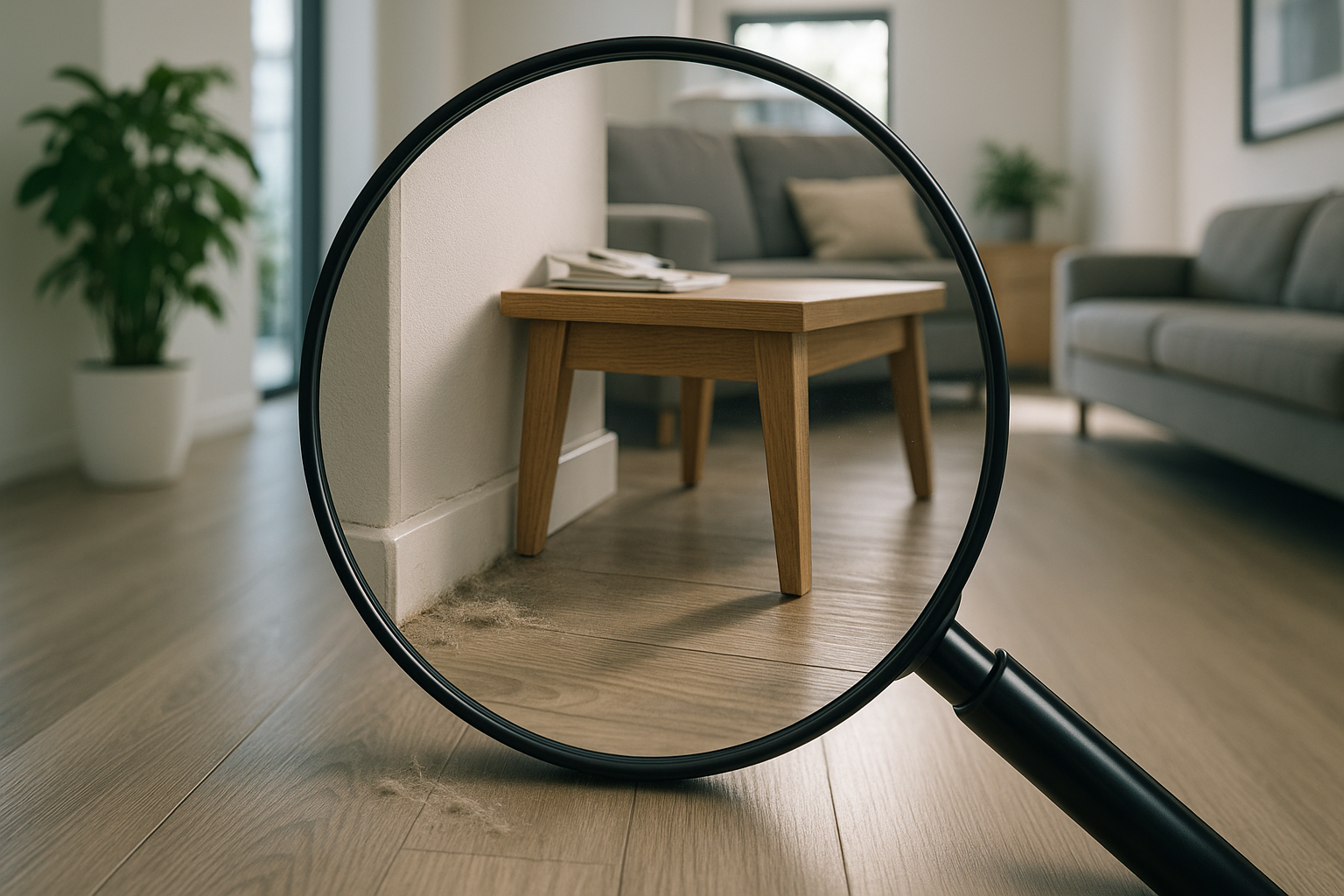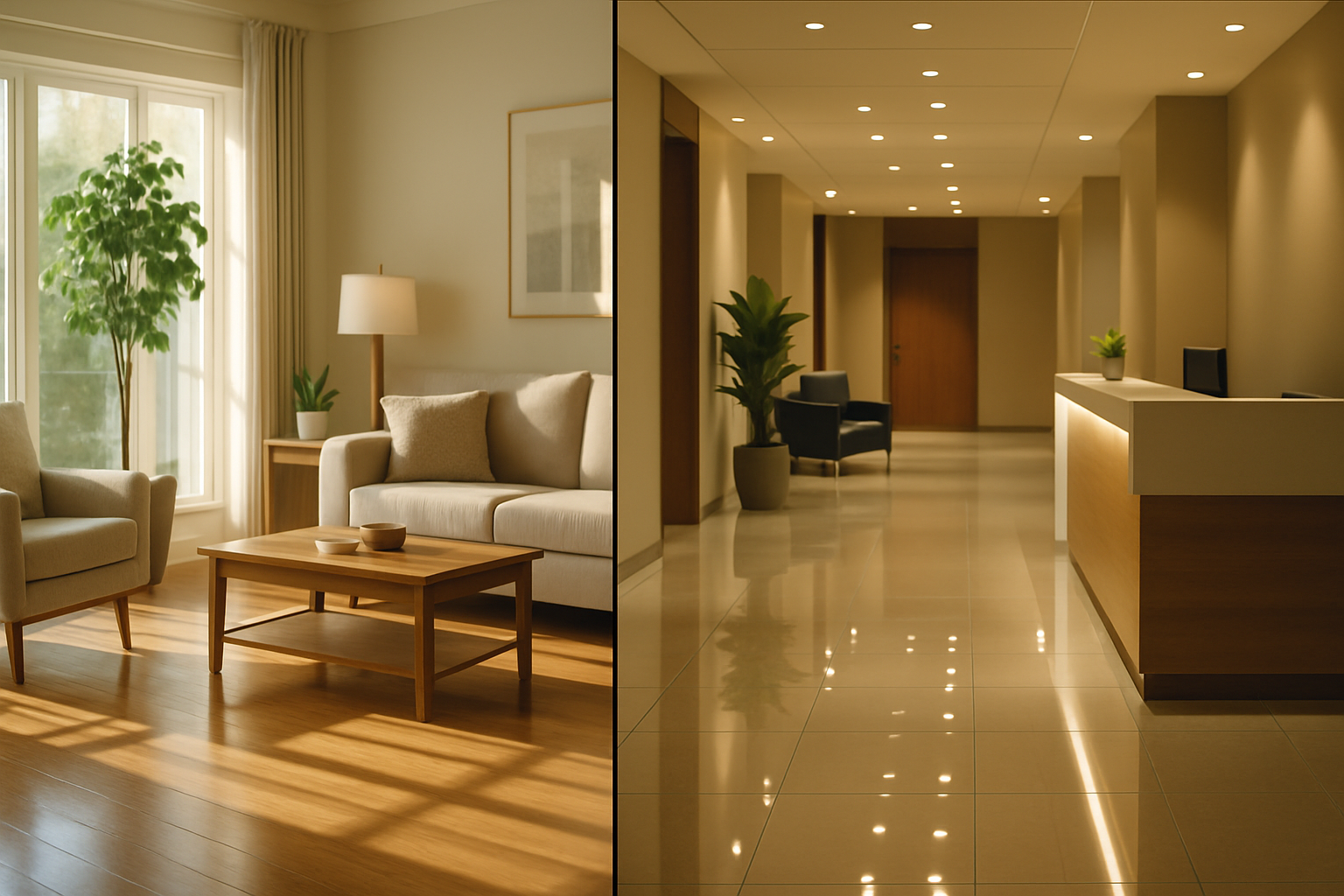Clean Isn’t Always Clean
Plenty of homes and offices look spotless—until you check the corners, crevices, vents, and edges where dust and microbes quietly build up. These “out of sight, out of mind” spots influence health, indoor air quality, and how a space actually feels. Pros focus on them because they’re the line between “looks clean” and truly clean.
Below are seven commonly missed areas—plus the evidence for why they matter.
1) Light switches & door handles
High-touch, often-ignored. In office settings, contamination can spread shockingly fast: University of Arizona researchers found that when a single sick person comes to work, about half of commonly touched surfaces can be contaminated by lunchtime. Another experiment showed a tracer virus spread from a single doorknob/tabletop to 40–60% of surfaces and people within 2–4 hours.
Sources: University of Arizona—UANews • American Society for Microbiology summary via ScienceDaily
Why it matters: These tiny touchpoints drive cross-contamination. Regular cleaning + disinfection reduces illness spread and keeps shared spaces safer.
2) Baseboards & wall edges
Below eye level, dust collects along trim and edges—and gets recirculated. The EPA notes indoor levels of some pollutants (especially VOCs) are often 2–5× higher than outdoors, and most people spend ~90% of their time indoors, so neglected dust matters.
Sources: EPA—Inside Story: IAQ • EPA—IAQ overview
Why it matters: Cleaner edges/baseboards = fewer particulates kicked up, better perceived cleanliness, and support for healthier indoor air.
3) Behind & under appliances
Moving fridges, stoves, copiers, and printers is a pain—so debris, dust, and moisture hide there, causing odors and attracting pests. Dusty refrigerator coils also hurt performance; Energy.gov advises cleaning underneath/around coils to help your fridge regulate temperature and run efficiently.
Source: U.S. Department of Energy—Energy Saver
Why it matters: Cleaner, better-ventilated appliance areas smell fresher, attract fewer pests, and help equipment last longer and run better.
4) Vents, grilles & ceiling fans
If they’re dusty, they’re redistributing dust. OSHA flags poorly maintained ventilation as a major driver of indoor-air complaints (allergies, asthma, respiratory issues). Routine upkeep of HVAC and air distribution surfaces supports healthier IAQ.
Source: OSHA—Indoor Air Quality in Commercial & Institutional Buildings (PDF)
Why it matters: Clean vents and fan blades = cleaner air and less strain on your HVAC system.
5) Office chairs & upholstery
We wipe desks and mop floors, but fabric seating traps dust, skin cells, and microbes. Research on office environments shows substantial bacterial abundance on common surfaces, with variability by surface type and usage patterns.
Sources: PLoS ONE—Office Surface Microbiome Study • (context) Safety+Health Magazine summary of 90-office study
Why it matters: Periodic upholstery cleaning improves air quality, appearance, and the lifespan of furniture.
6) Trash can interiors
Swapping liners isn’t enough. Food residues and moisture in can interiors can support bacterial growth and odors; public-health guidance consistently recommends routine cleaning + disinfection for surfaces in food-handling areas.
Sources: USDA—Clean then Sanitize: Kitchen • (kitchen hotspot context) NSF—Germiest Items in the Home
Why it matters: Regular cleaning/disinfection of the inside of bins prevents odor creep and reduces contamination risks.
7) Door frames & window tracks
They collect dust, debris, and even mold—quietly lowering the perceived quality of a room. While there isn’t a single national stat on “dirty tracks,” IAQ authorities emphasize source control and routine removal of dust/allergens as a pillar of healthy indoor air.
Sources: EPA—Introduction to IAQ • EPA—IAQ overview
Why it matters: Clean frames/tracks make rooms feel finished and help minimize allergen buildup.
Why these spots punch above their weight
Because we spend ~90% of our time indoors, small, persistent reservoirs of dust and microbes influence health, comfort, and productivity more than many people realize. Reducing indoor pollutants and keeping distribution surfaces (vents/fans) clean are core IAQ best practices that pay off daily.
Sources: EPA—IAQ (90% statistic) • OSHA—IAQ overview
Final thoughts: The details make the difference
“Looks clean” is the start—not the finish line. Hitting these overlooked areas turns a tidy space into a healthier, fresher, more professional environment.
At Apex Bay, we build our routines around the details—so you don’t have to think about them.
Ready for a clean that goes beyond the surface? Contact Apex Bay and we’ll tailor a plan that covers every corner that matters.
Written by the Apex Bay Cleaning Team — a trusted leader in residential and commercial cleaning solutions. We’re passionate about creating healthier, more sustainable spaces through expert techniques, eco-friendly practices, and industry experience. Alongside cleaning expertise, we share practical business advice to help you operate smarter and more efficiently. Our mission is simple: to make your home or business cleaner, safer, and easier to manage — one detail at a time.



